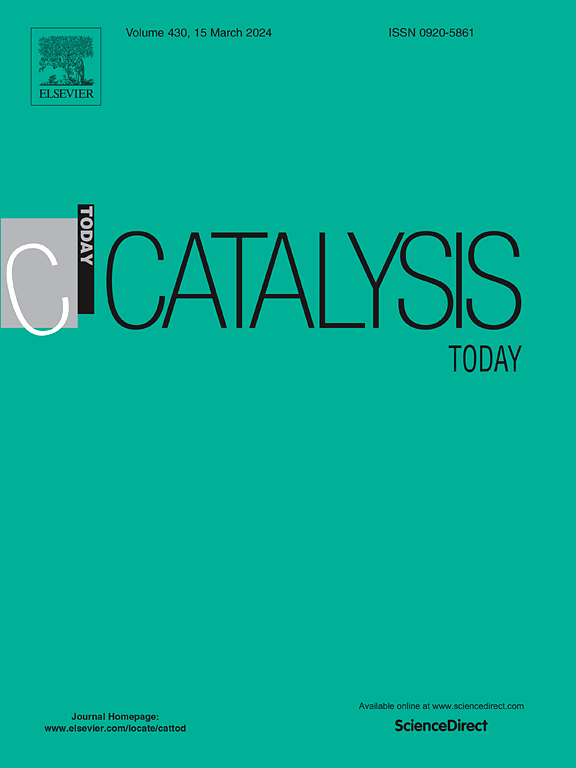Operando spectroscopic studies of alcohol to hydrocarbon process over HSSZ-13 with the aid of MCR-ALS analysis for active species identification
IF 5.2
2区 化学
Q1 CHEMISTRY, APPLIED
引用次数: 0
Abstract
This research examines the conversion of C1 and C2 alcohols to higher olefins utilizing protonic chabazite (HSSZ-13, SiAl = 11) zeolite. The study employs advanced operando spectroscopy techniques, including FT-IR and UV–vis, while simultaneously using mass spectrometry and gas chromatography to analyze the products. By applying identical amounts of C1 and C2 alcohols, the research can effectively examine the intermediates formed and coke production. Further, the same zeolite structure aids a more comprehensive understanding of reaction pathways. The operando FT-IR and UV–vis studies supplemented by mass spectrometry and gas chromatography results for products released from the catalyst surface provide significant information on the key intermediates involved. The similarities and discrepancies between the transformation of ethanol and methanol into olefins, according to the established hydrocarbon pool process, are noted. MCR-ALS analysis is employed for the operando FT-IR and UV–vis results, providing significant insights into the findings. Additionally, the research is supported by chromatographic examinations of the coke species obtained from spent catalysts.
基于MCR-ALS分析的HSSZ-13上醇制烃过程的操作光谱研究
本研究考察了利用质子激辉石(HSSZ-13, SiAl = 11)分子筛将C1和C2醇转化为高级烯烃的过程。该研究采用先进的操作光谱技术,包括FT-IR和UV-vis,同时使用质谱和气相色谱分析产品。采用等量的C1和C2醇,可以有效地考察中间体的形成和焦炭的生成。此外,相同的沸石结构有助于更全面地了解反应途径。从催化剂表面释放产物的质谱和气相色谱结果补充了operando FT-IR和UV-vis研究,提供了有关关键中间体的重要信息。根据已建立的烃池过程,指出了乙醇和甲醇转化为烯烃的异同。MCR-ALS分析用于操作的FT-IR和UV-vis结果,为研究结果提供了重要的见解。此外,该研究还得到了从废催化剂中得到的焦炭的色谱检查的支持。
本文章由计算机程序翻译,如有差异,请以英文原文为准。
求助全文
约1分钟内获得全文
求助全文
来源期刊

Catalysis Today
化学-工程:化工
CiteScore
11.50
自引率
3.80%
发文量
573
审稿时长
2.9 months
期刊介绍:
Catalysis Today focuses on the rapid publication of original invited papers devoted to currently important topics in catalysis and related subjects. The journal only publishes special issues (Proposing a Catalysis Today Special Issue), each of which is supervised by Guest Editors who recruit individual papers and oversee the peer review process. Catalysis Today offers researchers in the field of catalysis in-depth overviews of topical issues.
Both fundamental and applied aspects of catalysis are covered. Subjects such as catalysis of immobilized organometallic and biocatalytic systems are welcome. Subjects related to catalysis such as experimental techniques, adsorption, process technology, synthesis, in situ characterization, computational, theoretical modeling, imaging and others are included if there is a clear relationship to catalysis.
 求助内容:
求助内容: 应助结果提醒方式:
应助结果提醒方式:


